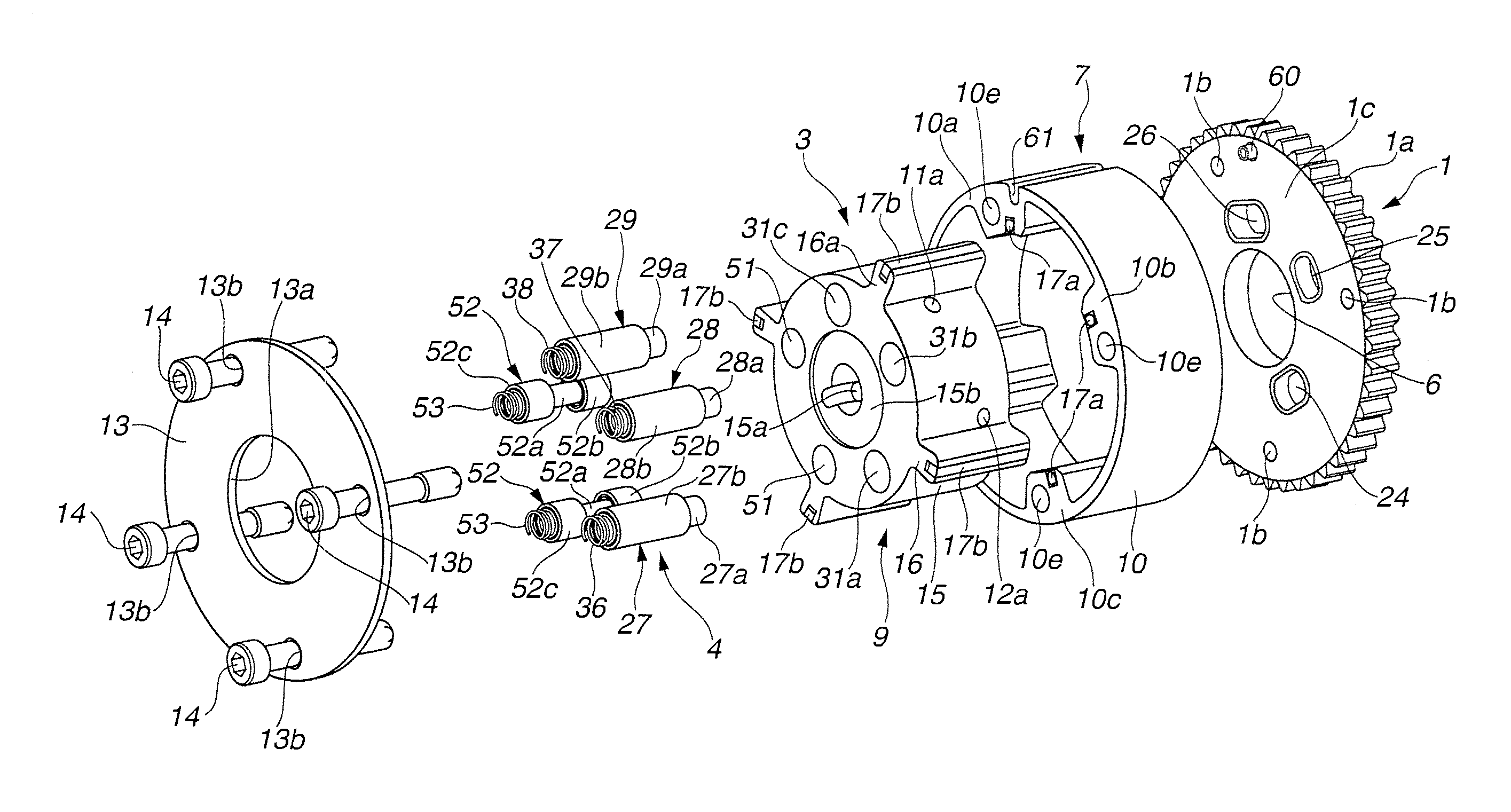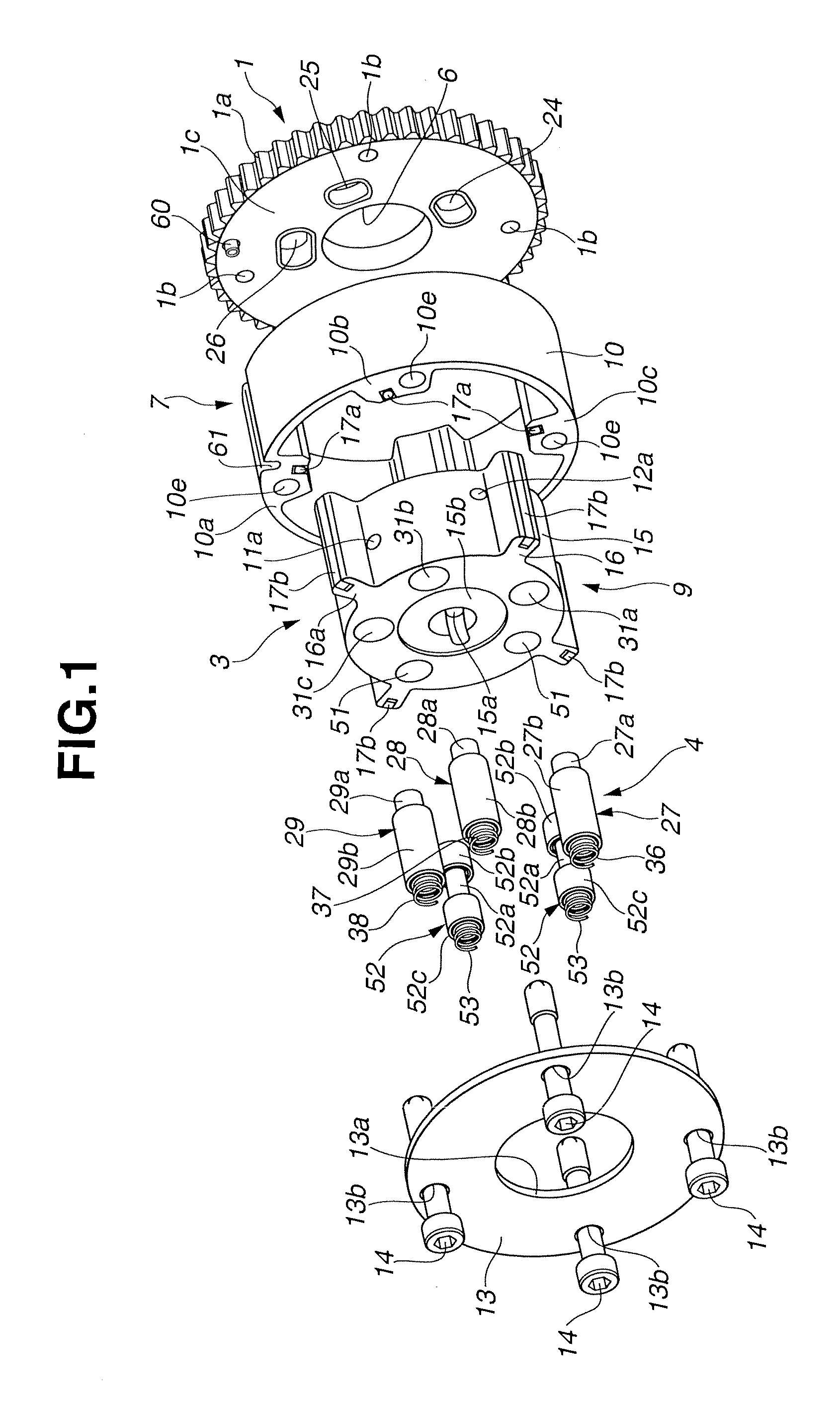Valve timing control device of internal combustion engine
a timing control and internal combustion engine technology, applied in the direction of valve arrangements, machines/engines, mechanical equipment, etc., can solve the problems of reducing the cross sectional area and affecting the operation of the communication passage. , to achieve the effect of reducing the cross sectional area
- Summary
- Abstract
- Description
- Claims
- Application Information
AI Technical Summary
Benefits of technology
Problems solved by technology
Method used
Image
Examples
first embodiment
[0026]Referring to FIGS. 1 to 12, there is shown a valve timing control device of a first embodiment of the present invention.
[0027]As is seen from FIGS. 1 to 4, particularly from FIG. 1, the valve timing control device of the first embodiment comprises a sprocket 1 that is driven by a crankshaft of an engine (viz., internal combustion engine) through a timing chain (not shown), an intake camshaft 2 (see FIGS. 2 and 4) that extends along a longitudinal axis of the engine and is rotatable relative to sprocket 1, a phase varying mechanism 3 that is arranged between sprocket 1 and intake camshaft 2 to vary a relative phase therebetween, a lock mechanism 4 that locks phase varying mechanism 3 at an intermediate angular position between the most advanced and retarded angular positions, and a hydraulic circuit 5 that feeds and drains a hydraulic pressure to and from phase varying mechanism 3 and lock mechanism 4 to independently operate the mechanisms 3 and 4.
[0028]As may be seen from FIG...
second embodiment
[0159]Referring to FIGS. 13A and 13B, there is shown a valve timing control device of a second embodiment of the present invention.
[0160]In this second embodiment, in place of passage control mechanism 50 used in the first embodiment, there is employed a passage control mechanism 50′.
[0161]Due to work of this passage control mechanism 50′, there can be produced a communication space “C” between a concave inside surface 10f of first shoe 10a of cylindrical body 10 and a convex outside surface 15c of rotor 15, as will be seen from FIG. 13B. Upon this, the neighboring retarding and advancing operation chambers 11 and 12 become communicated to each other through the space “C” produced.
[0162]As is seen from FIG. 13A, passage control mechanism 50′ comprises a rectangular groove 55 that is formed in first shoe 10a in a manner to face the convex outside surface 15c of rotor 15, a piston-like seal member 56 that is slidably received in rectangular groove 55 in a manner to selectively close a...
PUM
 Login to View More
Login to View More Abstract
Description
Claims
Application Information
 Login to View More
Login to View More - R&D
- Intellectual Property
- Life Sciences
- Materials
- Tech Scout
- Unparalleled Data Quality
- Higher Quality Content
- 60% Fewer Hallucinations
Browse by: Latest US Patents, China's latest patents, Technical Efficacy Thesaurus, Application Domain, Technology Topic, Popular Technical Reports.
© 2025 PatSnap. All rights reserved.Legal|Privacy policy|Modern Slavery Act Transparency Statement|Sitemap|About US| Contact US: help@patsnap.com



